The First Thurber Cartoon Art Prize Winner: Roz Chast!
"A Thurber must be seen to be believed—there is no use trying to tell the plot of it."
Yesterday, the annual Thurber Prize for American Humor Awards ceremony was held in Columbus Ohio. The literary prize has been around since 1997 and has recognized such great humor writers as Ian Frazier, Annabelle Gurwich, Mike Birbiglia, Trevor Noah, David Letterman, Dave Barry and many more. New Yorker writer and cartoonist James Thurber was born in Columbus.
Last year, Michael and I were instrumental in helping to establish the Thurber Prize for American Cartoon Art, partnering with Thurber House to pay tribute to the wonderful cartoons by James Thurber and celebrate the tradition of single panel cartoons.
This year, we are thrilled to announce that the Cartoon Art Prize was given to the wonderful Roz Chast! Michael and I were honored to be the ones who handed out the award to her, after which she delivered a very funny acceptance speech and thank you.
The prize goes to someone who, like James Thurber, has shared her world view with unique drawings and masterfully written words. And tons of humor. Congrats, Roz!!
Also present for the ceremony was James Thurber’s grandaughter, Sara Thurber Sauers. It was a so wonderful to meet her and spend time with her in person.
The finalists for the literary portion of the Thurber Prize were Elaine Hsieh Chou, Elinor Lipman and S.E. Boyd (a psuedonym for three writers, Kevin Alexander and Joe Keohane, and editor Alessandra Lusardi). The winner this year for the literary prize was S.E. Boyd for their book, The Lemon. Congrats!
Finally, I am reprinting an excerpt of wonderful piece by the great author and New Yorker writer Dorothy Parker. She was good friends with James Thurber, and I believe this essay is among one of the best descriptions of Thurber’s art there is. It appeared as the introduction to James Thurber’s 1932 book The Seal in the Bedroom and Other Predicaments.
****
“Mr. James Thurber, our hero, deals solely in culminations. Beneath his pictures he sets only the final line. You may figure for yourself, and good luck to you, what under heaven could have gone before, that his somber citizens find themselves in such remarkable situations. It is yours to ponder how penguins get into drawing-rooms and seals into bedchambers, for Mr. Thurber will only show them to you some little time after they have arrived there.
Superbly he slaps aside preliminaries. He gives you a glimpse of the startling present and lets you go construct the astounding past. And if, somewhere in that process, you part with a certain amount of sanity, doubtless you are better off without it. There is too much sense in this world, anyway.
These are strange people that Mr. Thurber has turned loose upon us. They seem to fall into three classes—the playful, the defeated, and the ferocious. All of them have the outer semblance of unbaked cookies; the women are of a dowdiness so overwhelming that it becomes tremendous style. Once a heckler, who should have been immediately put out, complained that the Thurber women have no sex appeal. The artist was no more than reproachful. “They have for my men,” he said. And certainly the Thurber men, those deplorably désoigné Thurber men, would ask no better.
There is about all these characters, even the angry ones, a touching quality. They expect so little of life; they remember the old discouragements and await the new. They are not shrewd people, nor even bright, and we must all be very patient with them. Lambs in a world of wolves, they are, and there is on them a protracted innocence. One sees them daily, come alive from the pages of the New Yorker—sees them in trains and ferryboats and station waiting-rooms and all the big, sad places where a face is once beheld, never to be seen again.
It is curious, perhaps terrible, how Mr. Thurber has influenced the American face and physique, and some day he will surely answer for it. People didn’t go about looking like that before he started drawing. But now there are more and more of them doing it, all the time. Presently, it may be, we shall become a nation of Thurber drawings.
Of the birds and animals so bewilderingly woven into the lives of the Thurber people it is best to say but little. Those tender puppies, those fainthearted hounds—I think they are hounds—that despondent penguin—one goes all weak with sentiment. No man could have drawn, much less thought of, those creatures unless he felt really right about animals. One gathers that Mr. Thurber does, his art aside; he has 14 resident dogs and more are expected. Reason totters.
All of them, his birds and his beasts and his men and women, are actually dashed off by the artist. Ten minutes for a drawing he regards as drudgery. He draws with a pen, with no foundation of pencil, and so sure and great is his draughtsmanship that there is never a hesitating line, never a change. No one understands how he makes his boneless, loppy[sic] beings, with their shy kinship to the men and women of Picasso’s later drawings, so truly and gratifyingly decorative.
And no one, with the exception of God and possibly Mr. Thurber, knows from what dark breeding-ground come the artist’s ideas. Analysis promptly curls up; how is one to shadow the mental processes of a man who is impelled to depict a seal looking over the headboard of a bed occupied by a broken-spirited husband and a virago of a wife, and then to write below the scene the one line “All right, have it your way—you heard a seal bark”? . . . Mad, I don’t say. Genius, I grant you.
It is none too soon that Mr. Thurber’s drawings have been assembled in one space. Always one wants to show an understanding friend a conceit that the artist published in the New Yorker—let’s see, how many weeks ago was it? and always some other understanding friend has been there first and sneaked the back copies of the magazine home with him. And it is necessary really to show the picture.
A Thurber must be seen to be believed—there is no use trying to tell the plot of it. Only one thing is more hopeless than attempting to describe a Thurber drawing, and that is trying not to tell about it. So everything is going to be much better, I know, now that all the pictures are here together. Perhaps the one constructive thing in this year of hell is the publication of this collection.
And it is my pleasure and privilege—though also, I am afraid, my presumption —to introduce to you, now, one you know well already; one I revere as an artist and cleave to as a friend. Ladies and gentlemen—Mr. James Thurber.”
Happy Saturday, thanks for being here!





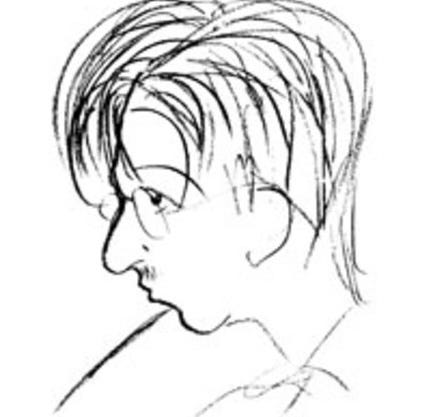
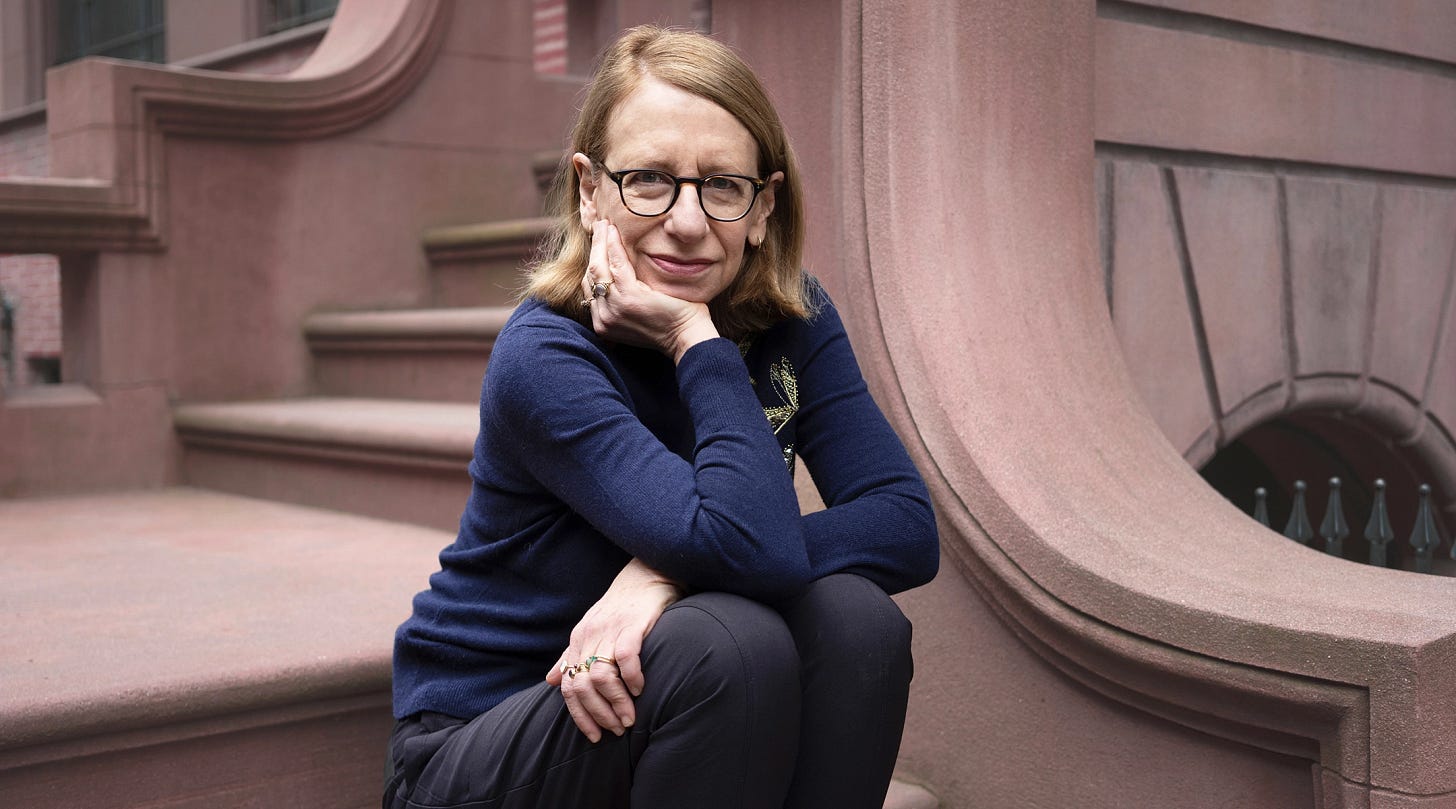
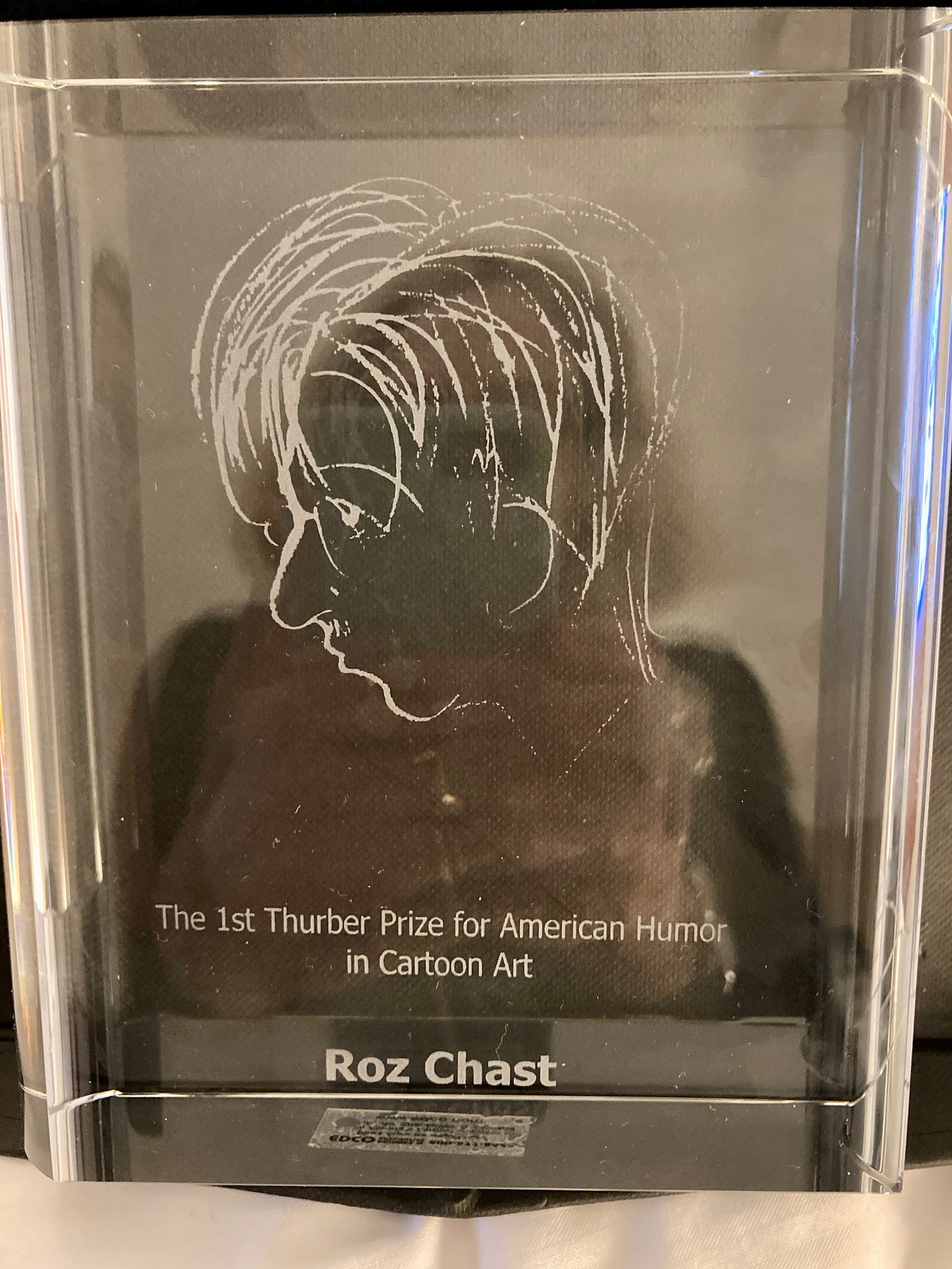
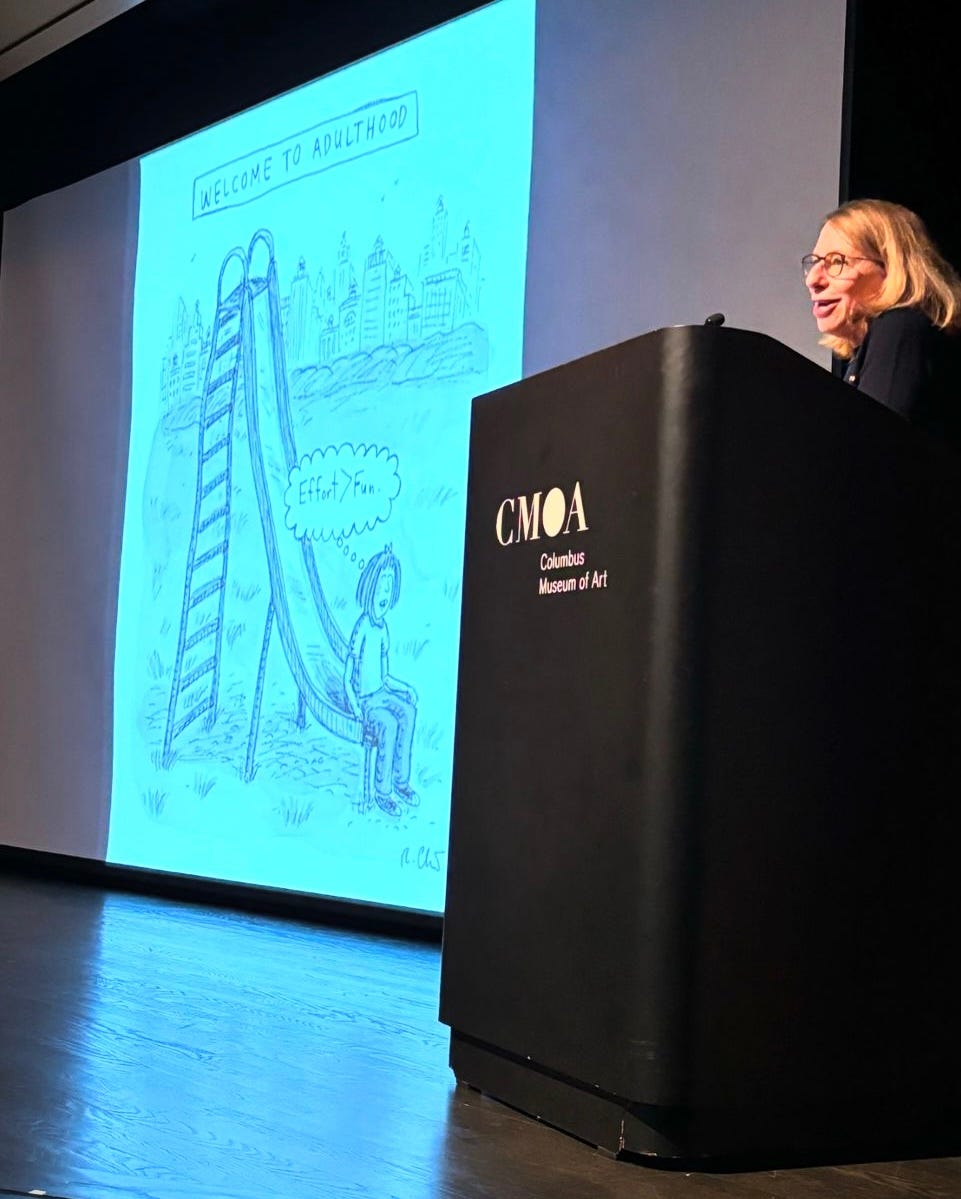

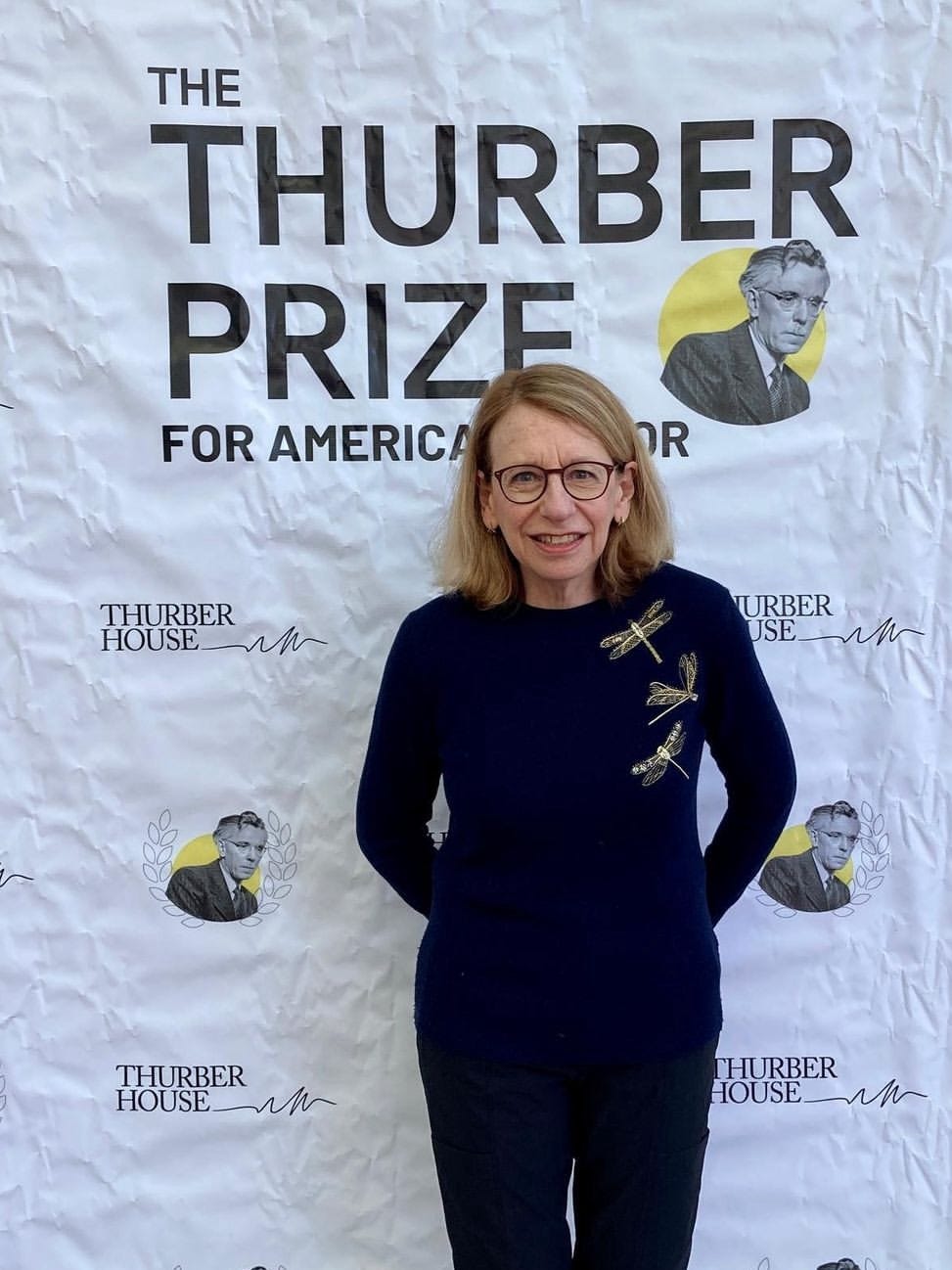
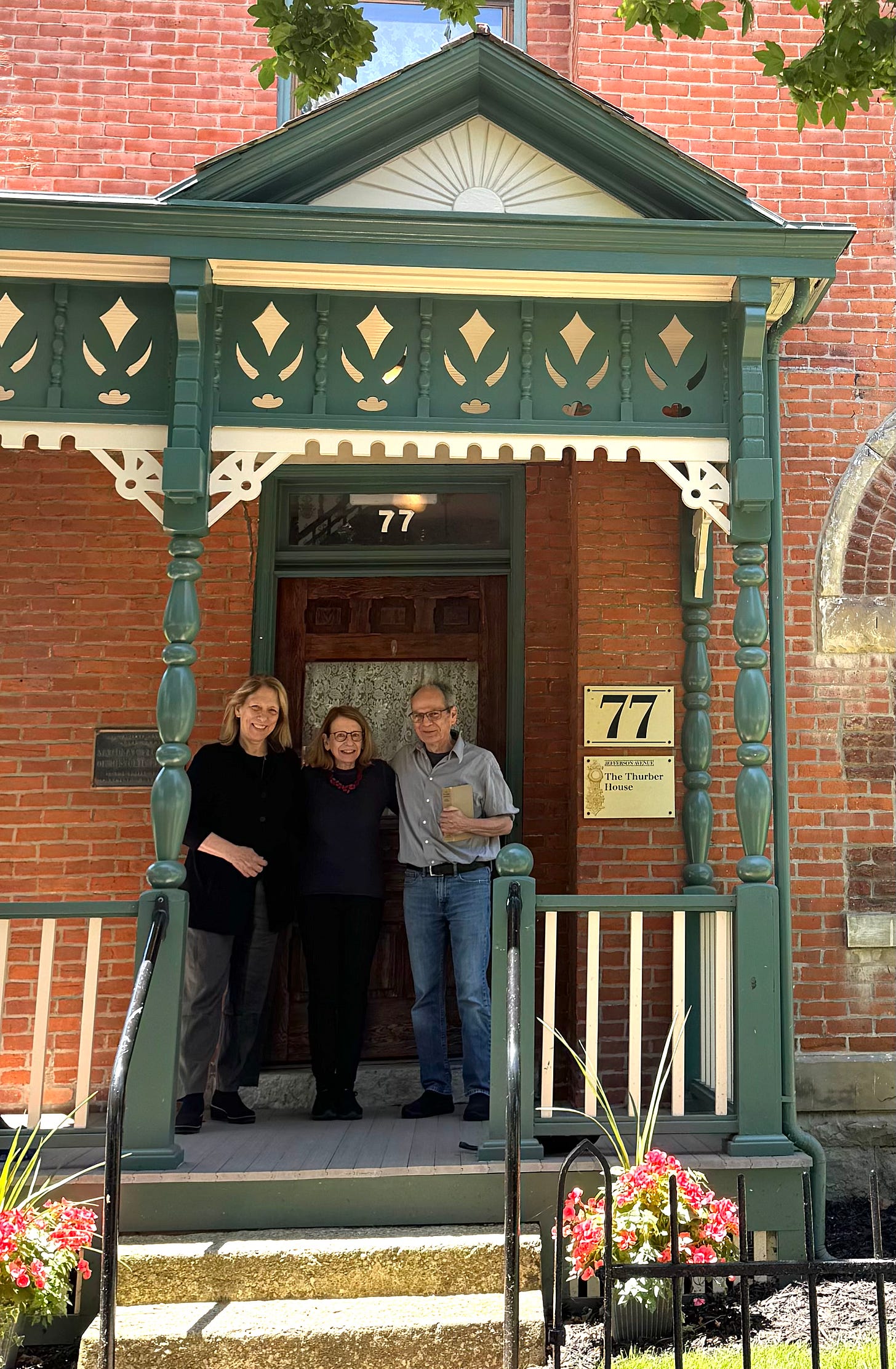
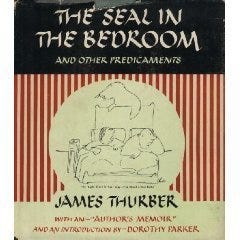
Terrible that the collection is out of print! But was able to buy a used copy!!
What a wonderful experience you & Michael had, Liza! I have always loved Roz Chast's cartoons for so many years... great choice. James Thurber would be pleased!